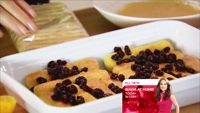Scripps Networks deploys Miranda branding across channels

Scripps Networks is using a Vertigo XG graphics system from Miranda Technologies to streamline its graphics production for a number of its specialty channels, including namely HGTV, Food Network, DIY Network, Travel Channel, Cooking Channel and Great American Country.
The new Miranda channel branding equipment — 26 Vertigo XG graphics processors — has been installed at Scripps Networks in Knoxville, TN, and is the culmination of multiphase project that began in 2007 to upgrade the graphics capabilities for 14 SD and HD feeds.
For Scripps Networks, the Vertigo XG graphics processors, in tandem with the Miranda Vertigo Suite of workflow tools, represent a smarter solution for graphics that integrates tightly with its traffic, promotion, asset management and automation systems, according to Peter Franks, director of design and motion services at Scripps Networks. He added that the Vertigo XG has allowed them to deliver more complex graphics without having to add more staff to its graphics team.
The first Scripps Networks channels to go on-air with the new graphics system were HGTV HD and Food Network HD, which allowed time to exercise new workflows. Deployment across other networks soon followed. With the recent acquisition of the Travel Channel, the Vertigo XG offered great flexibility for Scripps’ channel-branding requirements.
The staff can now drive graphics from a spreadsheet full of data, which automatically populates After Effects files and graphics template fields, which the Vertigo XG can play to air. This graphics automation saves considerable time and effort.
Miranda’s Vertigo XG, a single- or dual-channel graphics processor, offers multilevel character generation, animation/still and clip playout, as well as dual DVEs and audio mixing.
The Vertigo Suite graphics tools provide streamlined asset management, graphics creation, content editing and real-time data management, as well as work-order management and playout control. Finished graphics can be created directly from a user's desktop, dropped into predefined templates, linked to live data sources and inserted into playlists, all without writing a single line of software code.
The professional video industry's #1 source for news, trends and product and tech information. Sign up below.
